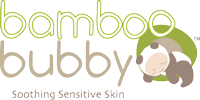The Differences Between Cotton And Bamboo Fabrics
Posted by Kelly Northey on 17th Nov 2013
Bamboo fabric has quickly become a favorite among parents with kids who have eczema. As most parents know, the right kind of fabric can make all the difference in the world, so it’s no wonder why so much attention is given to choosing the right ones for blankets, clothing, and toys. If you’ve been wondering why bamboo fabrics are so popular, we’re here to help!
Today we’re going to look at c
Cotton
Cotton is a classic crop grown worldwide, and it’s got a long history. Cotton crops can be found growing on aged plantations and on modern organic farms – both providing a popular fiber to the world.
In order for cotton to grow, it needs a great deal of water and lots of TLC. While some organic farms do exist, most cotton is grown with the use of pesticides and other chemical treatments.
Cotton fibers are often short meaning that fabrics made from them
have a pile that can be felt as a texture – sometimes rough to the touch. Cotton fibers can also have tiny spurs in the fibers which can irritate the skin even if the fabric itself is soft and smooth to the touch.
While cotton is a great warmer due to its short, piled fibers, it doesn’t wick very well. Cotton can absorb moisture from the body but it will usually trap that moisture instead of wicking and releasing it. Cotton is a great top fabric for keeping warm, but it can cause enough heat when worn against the skin to be irritating.
Bamboo
As the new champion of those with skin sensitivities, bamboo has worked hard to earn its great reputation.
Bamboo is grown using about a third of the water resources that cotton needs. It also has no natural pests so most every bamboo farm can be sustained with simple organic methods.
Bamboo fiber is naturally round like a tube which makes is soft and supple to the touch. It doesn’t have spurs or burrs in its makeup, and the fibers are extremely long which reduces the amount of piling needed to create fabrics from the raw fibers.
Bamboo fiber also has natural antibacterial properties which help keep germs and odor away between washings.
As a wicking material, bamboo is nothing short of amazing! It can hold up to three times its weight in water and it allows itself to let the water evaporate naturally. For people with eczema, this is a real fortune. Bamboo fiber can insulate and comfort while also drawing moisture away from the skin.
The Best Fabric For Eczema Issues
As you can see, there’s no wonder why so many people are choosing bamboo fabrics when sensitive skin, allergies, or eczema are an issue. Bamboo is light, breathable, wicking, and antibacterial – and it’s a sustainable crop that’s gentle on the earth and our natural resources.
If you haven’t tried bamboo fabrics for your child, now is the time to see what all the buzz is about!
Check out the growing selection of Bamboo Bubby products made lovingly using bamboo fabric and feel the difference!






